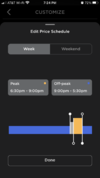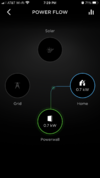I find that study a bit stupid unless I read it wrong. Admittedly I skimmed it. They are testing keeping it at 15% SOC versus 90% SOC. Who wants to keep their EV at 15%? For that matter who wants to keep their PW at 15%? They should have tested SOC at practical useful levels.
You're right you skimmed it.





